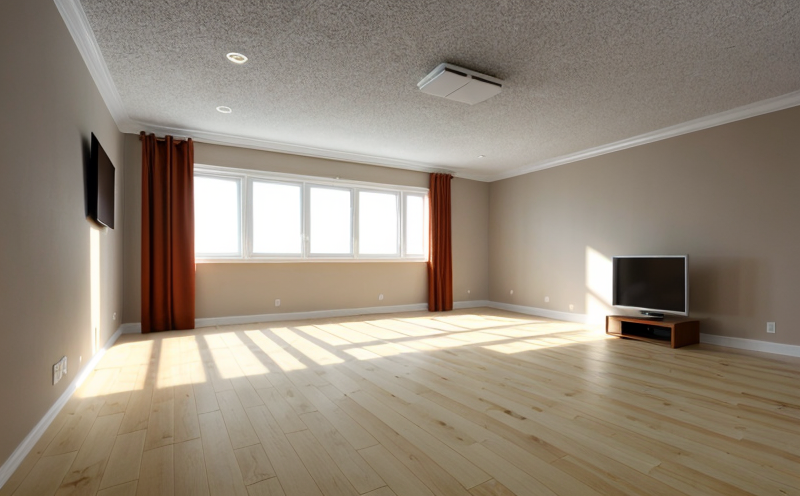ISO 3382-1 Reverberation Time Testing of Performance Spaces
The ISO 3382 series is designed to provide guidance on methods for determining the reverberation time in performance spaces. This method, particularly ISO 3382-1, plays a crucial role in ensuring that performance spaces meet the acoustic requirements specified by architects, acoustical engineers, and clients alike.
Reverberation time is a critical parameter that influences how sound behaves within a space. It affects speech intelligibility, the ability to hear music or spoken word clearly, and the overall aesthetic experience of a performance venue. This testing method ensures that spaces like concert halls, theaters, auditoriums, and recording studios achieve optimal acoustics by measuring the time it takes for sound to decay to 60 dB below its initial value after a sudden stop.
According to ISO 3382-1, reverberation time is measured in anechoic conditions using a specific type of room that minimizes internal reflections. The test involves placing a sound source at the center of the space and measuring the decay time as the sound gradually diminishes after being emitted. The results provide insights into how well the space absorbs or reflects sound, which is essential for creating a balanced acoustic environment.
For quality managers, compliance officers, R&D engineers, and procurement professionals involved in this sector, understanding ISO 3382-1 testing is paramount. It ensures that performance spaces are designed to meet specific acoustic standards, enhancing the overall experience for both performers and audiences. The test also aids in identifying any potential issues with sound quality early on in the design process.
The accuracy of these tests can significantly impact project timelines and budgets. Inaccurate measurements could lead to costly rework or suboptimal designs. Thus, it is essential to have a reliable testing partner that understands both the technical aspects and the broader implications for clients and end-users.
At Eurolab, we employ advanced equipment and experienced professionals who adhere strictly to ISO 3382-1 standards when conducting reverberation time tests. Our approach ensures precise measurements and accurate data, providing stakeholders with confidence in the quality of our work.
Benefits
Conducting ISO 3382-1 reverberation time testing offers numerous benefits for those involved in designing and managing performance spaces. Here are some key advantages:
- Improved Acoustic Quality: Ensures that the space meets the required acoustic standards, enhancing both speech intelligibility and sound quality.
- Precise Measurements: Advanced equipment and strict adherence to international standards guarantee accurate results every time.
- Enhanced Client Satisfaction: By delivering spaces that meet or exceed expectations, you can improve client satisfaction and ensure repeat business.
- Cost Efficiency: Early identification of issues through testing reduces the need for costly rework later in the project lifecycle.
- Compliance Assurance: Ensures compliance with relevant international standards, reducing potential legal risks.
- Professional Reputation: Demonstrating expertise and reliability in acoustical testing can enhance your professional reputation.
- Customer Confidence: Clients will feel more confident knowing that their space has been tested to the highest standards.
- Efficient Project Management: Reliable data from these tests helps streamline project timelines, ensuring timely completion and delivery of high-quality spaces.
Eurolab Advantages
At Eurolab, we pride ourselves on offering unparalleled expertise in acoustics testing, including ISO 3382-1 reverberation time tests. Here’s why you should choose us:
- Proven Experience: Our team has extensive experience in this field, ensuring that we understand the nuances of performance space acoustics.
- Advanced Equipment: We use state-of-the-art equipment to ensure accurate and reliable results every time.
- Comprehensive Understanding: Our professionals possess a deep understanding of both technical aspects and broader implications for clients.
- Client-Centric Approach: We tailor our services to meet the unique needs of each project, ensuring that your specific requirements are addressed.
- Rigorous Quality Control: All tests are conducted under strict quality control measures to ensure consistency and accuracy.
- Transparency: Our clients receive detailed reports and explanations of our findings, allowing for informed decision-making.
- Compliance Assurance: We stay up-to-date with the latest standards and regulations, ensuring that all tests comply with international guidelines.
- Supportive Collaboration: Our team works closely with clients to provide guidance throughout the testing process, ensuring a smooth and efficient experience.
Use Cases and Application Examples
| Space Type | Description |
|---|---|
| Concert Hall | A large space designed for musical performances, where accurate sound reproduction is crucial. |
| Theater | A venue used for plays and musicals, requiring good acoustics to enhance the audience's experience. |
| Auditorium | A multi-purpose space often used for lectures, conferences, and performances, where sound quality is essential. |
| Space Type | Description |
|---|---|
| Recording Studio | An environment designed to capture high-quality audio, requiring precise control over acoustical conditions. |
| Event Venue | A space used for various events, from weddings to corporate functions, where sound clarity is important. |
| Sporting Arena | A large enclosed space often used for athletic competitions or concerts, where acoustics can impact the overall experience. |





